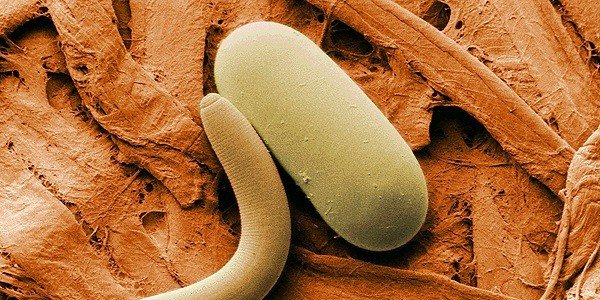Toxocarosis

Description
Toxocarosis is a parasitic infection caused by roundworms /nematodes/. The vector of the spread of parasites is infected feces of animals.
Nematodes are most often found in dogs, cats and foxes and most often affect younger children who have not yet developed hygiene habits.
The likelihood of coming into contact with contaminated soil is greater in children, as they put their hands in their mouths after playing. However, the reported cases are in people of all ages.
What are the symptoms?
In most people, roundworm infestations do not cause any symptoms and they die after a few months.
However, some people develop some of the following symptoms:
• Cough;
• High fever;
• Headache;
• Stomach pain;
• Enlargement of the liver or spleen;
• Appearance a rash that sometimes resembles hives;
• Swelling of the lymph nodes;
In rare cases, roundworm larvae invade some organs such as the liver, lungs, eyes and brain and cause severe clinical manifestations such as:
• Fatigue;
• Anorexia;
• Difficulty breathing;
• Blurred or blurred vision in one eye and swelling of the area around the eyes. If the disease is not treated, it can lead to damage to the retina and permanent weakening of visual acuity.
Contact your GP immediately immediately if you suspect that you or your child have symptoms of roundworms.
What are the causes?
Parasitism is caused by the larvae of the helminth worms Toxocara canis and Toxocara cati, which usually inhabit the intestines of dogs and cats.
The eggs of the parasites are passed in their faeces and can contaminate the places where children play, most often the sandpits where the little ones like to dig.
Eggs can be ingested by younger children, especially those between the ages of 1 and 4, who often put things in their mouths and rarely wash their hands.
p>
After entering the body the eggs hatch into larvae which penetrate the walls of the digestive tract and compromise them and migrate to the child’s liver, lungs or eyes.
Unfortunately, no studies have been conducted in Bulgaria, but in the USA, according to various expert estimates, about 20% of dogs excrete Toxocara canis eggs in their feces.
In the UK 24% of soil samples taken from public parks contain the eggs. The disease does not spread from person to person.
Treatment of toxocarosis
In most people, no treatment is necessary because the parasites die after a few months in the human body and are passed out in the stool.
Treatment is only necessary in severe cases when the parasitosis causes organ damage.
Medications are the main form of treatment in these cases, therapy is usually carried out at home, but hospitalization may be required if symptoms are too severe.
Medications that are administered are anthelmintic, which destroy the larvae of the parasite.
Albendazole is most often prescribed, and if its use is contraindicated, its alternative is mebendazole. When the nematodes have affected the eyes, corticosteroids are prescribed.
Prevention
To prevent children from being exposed to parasite eggs, you should do the following:
• Keep them away from places where there are dogs and cats;
• Wash their hands often;
• Remind your older children to wash their hands often, especially after playing with a pet dog or cat;
• Try to wean young children from putting their dirty hands in their mouths;
• Maintain your pet’s toilet and cover it when not in use.
• Deworm your pets regularly, recommended at 2 months and mandatory for puppies under 6 months of age.



